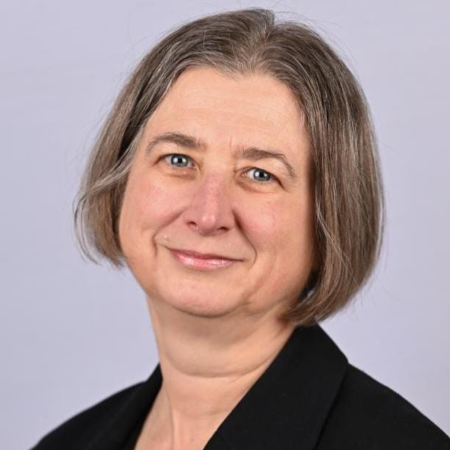Changing horses mid race: When SCF programmes switch owners
The proposed move of GE Capital’s SCF programme to MUFG raises many questions. How does 'porting' SCF from one provider work (or not), and what makes a corporate choose a bank over a non-bank provider (or otherwise)? What happens to the long tail? TXF spoke to banks and platform providers to gauge their views.

When GE announced it was planning to move its supply chain finance (SCF) business to MUFG in February, GE Capital was a provider of the SCF services through its Trade Payables Service (TPS) accelerated payment programme. The overwhelming majority of the business was a programme that they were running for GE business suppliers themselves.
Two immediate questions came out of the move. Why would GE want to port a programme at all? Secondly, and more generally, why would a corporate choose a bank over a supply chain finance platform provider if it wanted to port its programme?
To port or not to port?
There are a number of drivers in considering bank versus non-bank programmes, but first it’s important to define ‘port a programme’. As Peter Jameson, head of Asia Pacific trade and supply chain finance, global transaction services at Bank of America Merrill Lynch points out, there are two broad components of a SCF programme. First is the technology/channel solution. “This is the operating platform for the buyer and supplier entities. To ‘port’ between technology platforms can be complex, time-consuming and disruptive, hence not something you would want to do frequently,” Jameson says. Second is the funding of the programme. “This is the underlying balance sheet that provides funding for the SCF programme, funding models can be changed without significantly impacting the technology/channel solution,” he adds. “So as a broad statement – porting a programme ‘lock, stock, and barrel’ is disruptive. However, the funding of a programme can be adapted without as much disruption.”
So what does MUFG get by having TPS? It will own GE’s platform. GE business will continue guaranteeing the use of the platform for a reasonably short period (perhaps as little as two years), but from then businesses will be free to migrate [from TPS] should they choose to. In the meantime, MUFG will pick up the costs of running the platform, and it gives the bank enhanced expertise from the platform team, the technology and a credible base from which to build and market its SCF activities to other potential customers.
In an interview, TXF asked Maureen Sullivan, managing director and head of MUFG’s Supply Chain Finance Group for the Americas whether GE suppliers will see any difference in what’s offered to them and the incentives to join the programme. She says, “MUFG will be working with GE to design a specific SCF programme tailored to GE businesses and their suppliers.”
Some players are sceptical about this. “I'm curious how MUFG is going to onboard the thousands of suppliers required by the GE Capital SCF book of business,” says Christopher Cauley, head of working capital solution consulting at Taulia. “One of the key elements of the GE Capital SCF programme was scalability to thousands (tens of thousands) of mid and smaller suppliers. I don't believe MUFG will be able to perform on this.”
The funding perspective
The fact that GE Capital is selling its own SCF platform is not such a great surprise from a funding perspective. This is because it’s likely seen as a non-core business that was becoming relatively expensive. GE’s credit rating has been under pressure, and the halcyon days of its triple-A rating status, which lasted from more than half a century from 1956, ended in March 2009. Ten years on and the rating has slipped to BBB+. Already in the past several years GE has had no financing advantage for being the ‘anchor’ source of liquidity for these programmes, so the company had concentrated on providing an inhouse service for GE.
The question going forward was whether the company would stay as an investment grade credit (minimum BBB-/Baa3 rated by Standard & Poor’s and Moody’s respectively) and be able to be efficiently a financer of SCF.
“This is not like a company like Vodafone deciding they want to switch who provides their SCF to Taulia from Citibank, this is like Citibank saying they no longer want to own their SCF platform and selling it to someone else,” says one industry insider.
Citibank has experience of the latter. It established Orbian in 1999 (as a JV between SAP and itself) and in 2003 took the decision to sell a majority stake while at the same time continuing to use Orbian as a ‘white label’ provider of SCF services to its clients. Similarly, GE will continue to avail itself of a SCF programme for its own working capital management requirements but it no longer feels the need to own the underlying business.
When asked whether a bank like Citi – the self-professed largest bank provider of SCF programmes globally – would want to take over a big ticket programme like GE’s TPS, for instance, Murat Demirel, EMEA co-head trade finance, treasury and trade solutions at Citi, told TXF: “From time to time we do look at those sort of things, but what we saw in 2018 was our SCF business is growing organically at such a fast pace, it’s not necessary.”
That double digit growth in the past two years has been through winning mandates, say in North America or western Europe, Demirel says, and local corporate suppliers for anchor companies have wanted to join the SCF programmes from elsewhere in the world. “So when your own business grows at that pace, you look a bit less at those outside portfolios.” Adds Faraz Haider, EMEA head of trade services, treasury and trade solutions at Citi: “In addition to that we haven't had any capacity constraints. We have the largest distribution in the trade asset space as well. A lot of buyers were interested in SCF and we're doing a lot of origination and whenever we have been confronted with a situation whereby we have to create more capacity, there is a secondary market. So, as Murat [Demirel] says, organic growth in double digits continues.”
Why banks over platform providers?
More generally, if the funding of the programme is the main reason for porting, there are some general considerations for choosing a bank over a SCF platform provider. Jameson at BAML raises several plus points for banks: “Banks can provide both the technology component and the balance sheet component – an end-to-end solution. Non-bank providers will rely on a funding source to complement their technology capability,” he says.
Second, he argues that bank funding can offer increased stability – e.g. part of a broader, ongoing credit relationship with the buyer (client). “Given non-bank providers rely on external funding from investors, they are relying on the fact that investors remain active (if a particular investor base no longer wants to invest, what happens to the programme?). Hence bank-funded programmes can provide greater stability and predictability as a funding source,” Jameson says.
Third, Jameson points to potential consolidation. “Although there are currently many established non-bank providers, we anticipate further change and consolidation in this part of the industry. In our view, a bank can provide greater certainty for buyers (clients) of future consistency, as well as elements like transparent external ratings, strong regulatory scrutiny etc,” he says.
Consolidation in the SCF business been talked about for a long time, though. Whether MUFG is likely to be one of the consolidators is yet to be seen, but its move to take on GE’s SCF is, “a ‘statement of intent’ at the very least,” as one industry insider argues. Another possible trigger for MUFG’s actions could be one of competitive positioning as SMBC took a 15% stake in Orbian in 2014/2015, but that is not clear.
Fourth, Jameson argues that a bank provider can integrate SCF with their other capabilities such as payments, P-Card [purchasing cards] and other trade solutions. “Whereas a non-bank SCF provider typically offers just that. Hence, with the breath of capabilities and stability that a bank can provide under an SCF programme, and the extended capability into other GTS (global treasury services) products, corporates should not need to port a programme.”
That said, certain non-bank SCF providers do offer P-Cards, etc, and Jameson acknowledges that, if a client expects to change its core banking/lending group frequently, then a non-bank provider would provide the flexibility to maintain a single technology solution, yet change the banks that fund the programme. “This assumes that the bank partners are able to connect to the chosen technology platform.”
Taulia’s Cauley takes a different perspective as to why a corporate would choose a bank, and his views are less positive about banks. “If the corporate is primarily interested in giving their house bank further share of wallet, they will choose one of their house bank’s SCF platforms. Additionally, if a corporate has never done a SCF programme and never experienced the limited success of bank supplier onboarding, the corporate may want to 'try' a short tail SCF programme with only their top 25-50 suppliers and see how the bank performs with supplier onboarding; again, allowing the corporate to check the house bank share of wallet box,” he says, cautioning, “Banks have a lengthy cumbersome paper-intensive supplier onboarding process that takes a supplier months to complete. This is why bank SCF programmes typically only onboard from 10-50 suppliers; never offering SCF to the hundreds and thousands of mid and long tail suppliers (who arguably need the early payment option the most).”
The need to address this ‘long tail’ is one of the more compelling reasons for non-bank SCF programmes, at least according to those providers. “Many of Taulia's SCF programmes are from prior failed bank programmes where the bank was only able to onboard 20-50 suppliers over two-four years. Taulia then comes in and implements our SCF+ SaaS platform and onboards hundreds/thousands of suppliers in six-nine months,” says Cauley. A corporate may want to move from an existing bank programme to a fintech SCF programme, “because Fintech SCF programmes such as Taulia are simple for suppliers to onboard, taking only 90-seconds. Additionally, all suppliers can be invited to the Taulia SCF platform regardless of supplier spend or any other criteria. The smallest to the largest can join and it is a simple supplier experience.”
Technology and the long tail – partnering up
But technology is also benefiting the banks. "We are absolutely in the era of the long tail at the moment,” says Natasha Condon head of trade sales, Europe, treasury and trade solutions at Citi. “And what has completely changed and what has allowed that is the technology development because we have gone from five or 10 years ago when a supplier had to be onboarded by hand to the point where we have invested in technology that allows that to be done electronically and that transforms everything because the marginal cost of supporting a small company is an irrelevancy now. So if you are a corporate you can offer a solution across your supplier base without having to think about how much procurement resource that's going to take you, for a big company versus a small company, if you want to bring in those suppliers we can support it. But more importantly corporates are not just thinking about ‘one size fits all’ solutions for their entire supplier base.”
And technology is certainly helping both banks and platform providers to avoid charges of having one-size solutions. Partnering is key. Jameson notes BAML has a “market-leading platform to support SCF, including balance sheet funding, and integrated with other GTS capabilities. However, we also partner with platform providers in the market where a client wishes to take advantage of their technology but use [our] balance sheet to support the programme.”
Condon at Citi adds: “Looking at the purchasing side you can put a supply chain finance solution alongside a dynamic discounting solution [Citi partners with C2FO on this] alongside a P-card solution and you can target each one of those to the parts of your supplier base you will find it most attractive and therefore as a corporate you will achieve whatever is the goal. Working capital, cost benefit margin, whatever it may be. And that is a big change to how these solutions used to work both for us but, more importantly, for the way corporates think about it.”
What drives success?
The drivers for success in porting programmes vary with what the corporate wants to achieve. As Cauley says, successful porting for Taulia is typically defined by onboarding thousands of suppliers quickly and releasing millions in improved working capital via procurement-led term extensions programmes, should they choose to. “Some corporates are looking to extend supplier payment terms and others are not. Some corporates view the early payment programme as a corporate social responsibility programme that strengthens their supply chain health. It really depends upon the corporate's goals for the early payment programme.”
Taulia's goal, Cauley says, is not to supplant bank SCF programmes. “We always recommend continuing the bank SCF programme in parallel [with] Taulia but the reality is once Taulia is deployed the suppliers see it as so much easier and inevitably port to Taulia.”
“Changing programmes is never truly ‘plug and play’,” Jameson argues. “While the bank and/or platform provider can make it as seamless as possible, there will always be a ‘cost to change’, either to ensure the buyer is properly integrated with the new platform, or the disruption of moving suppliers over from one platform to another.”
Clearly, flexibility is the watchword for successful SCF as the needs/desires of corporates vary widely. How the GE TPS/MUFG story pans out remains to be seen.





